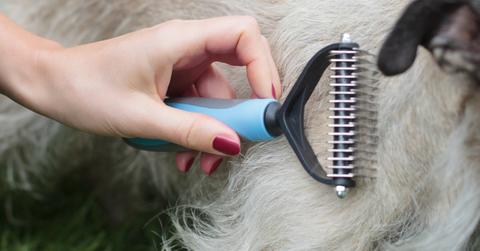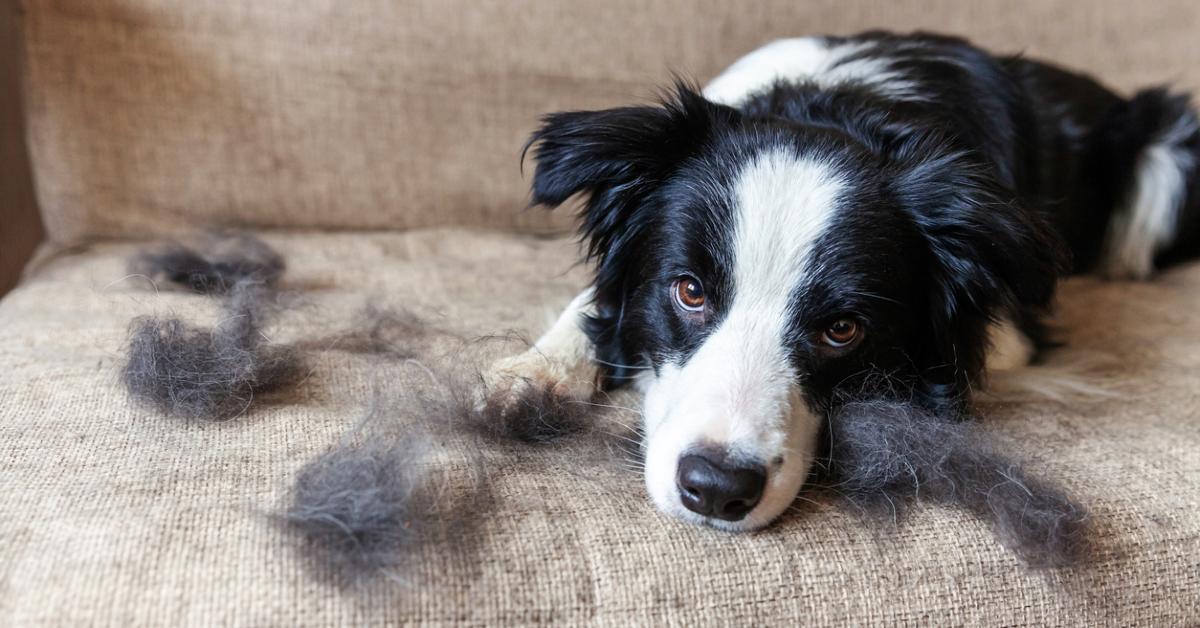These Artists Are Making Clothing With Dog Hair, but Not Everyone Is a Fan
Published Nov. 8 2023, 8:00 a.m. ET

The Gist:
- Chiengora — the art of spinning yarn and creating textiles from dog hair — has been around since ancient times.
- Today, several small businesses are turning excess dog hair into knitwear pieces.
- In terms of animal kindness, vegans may see chiengora as unethical.
Dog people know that hair slowly becomes part of the home decor — especially those with double-coated dogs. Their fluff sticks to the carpet, the couch, and the pillows. And when they're groomed, a whole new pooch can be built from the fur or hair stuck in the slicker brush.
According to Forbes Advisor, 65.1 million U.S. households have a dog. That's a lot of loose hair and fur getting tossed. Considering dog hair is up to eight times warmer than sheep's wool, as per Modern Farmer, some have wondered if man's best friend may offer a strong and sustainable fiber. Should we be spinning yarn from Shadow's undercoat shedding?
Well, as detailed by TIME, the art of chiengora — which blends the French word for dog (chien) with "gora," referencing angora rabbit and goat hair — "dates back millennia." With roots in "pre-historic Scandinavia and the North American Navajo Indians," as per a North Carolina State University thesis paper, and Indigenous Pacific Northwest communities, dog hair textiles are nothing new.

Can you make yarn from dog hair? Indigenous peoples have been spinning dog hair for thousands of years.
From the Coast Salish to the Nuu-chah-nulth peoples, chiengora has a rich Indigenous history, as per Hakai Magazine. These Indigenous peoples, often women, fed and nurtured white wool dogs on islands along the Pacific Northwest regions, brushing their coats before shearing them with mussel-shell knives biannually.
They spun the long white hair into yarn, adding in mountain goat wool, goose down, and plant fibers, since dog hair doesn't bind well on its own, according to Hakai.
During the 19th century, dog hair fabrics became scarce, as sheep's wool and plant-based mass-produced textiles gained popularity, as per TIME.
Due to chiengora's mainstream disappearance, it feels weird to don a scarf made from the family collie's hair. As put by TIME, dog-based knitwear gives ... Cruella de Vil. Of course chiengora has nothing to do with skinning doggos, but there's a cultural barrier: We don't typically wear our pets. Still, some artisans are normalizing chiengora in the 21st century.
Many artists and small businesses offer dog hair yarn and knitwear pieces.
Though GQ wrote that Kendall Crolius and Anne Montgomery — co-authors of 1994's Knitting With Dog Hair — are credited with popularizing modern chiengora in America, Knit Your Dog's owner and proprietor, Jeannie Sanke, has educated the internet on chiengora truths and myths in recent years.
Knit Your Dog offers clothing and accessories made from your own dogs' harvested hair. As for the "harvesting," customers are required to mail bags of their dog's dry, mat-free hair that have been collected via brushing.
Once Sanke receives the hair, it is washed, carded, and either spun on its own or blended with another fiber, if needed. From there, the yarn is wound into skeins and used to make sentimental goods.
Is making dog hair yarn ethical? It depends who you ask.
Sanke also points out that chiengora crafting uses dog hair, not fur.
“Fur is still attached to the skin, and there is a federal ban on that,” she told GQ.
Still, it's important to note that chiengora products can never be vegan, as many vegans abide by the belief that "animals are not ours" to use, eat, or wear, since animals cannot consent to us using parts of their body. So, some vegans and other animal advocates would call chiengora unethical.
When you consider the evils of the sheep wool industry, it's clear that we need to find alternatives.
Practices such as tail docking, painful "elastration" castration, overcrowded pens, aggressive shearing, and the violent "mulesing" process are all common in the industry, as per In Defense of Animals.
Plus, using sheep has a significant environmental impact, as sheep produce immense methane emissions. A 2021 CBD report found that "the climate cost of sheep’s wool is three times greater than acrylic and more than five times greater than conventionally grown cotton."
However, plant-based and synthetic materials are better alternatives to sheep wool than using dog hair — since, thinking large-scale, harvesting dog hair obviously isn't practical.
Approximately 1,500 yards of dog hair yarn are needed to knit just one medium-sized sweater. And in 2017, Sanke charged $800 for a large dog hair sweater.
Commercially, chiengora may never make sense. So, if you're hoping to snag a $38 dog hair poncho from Target, don't hold your breath.